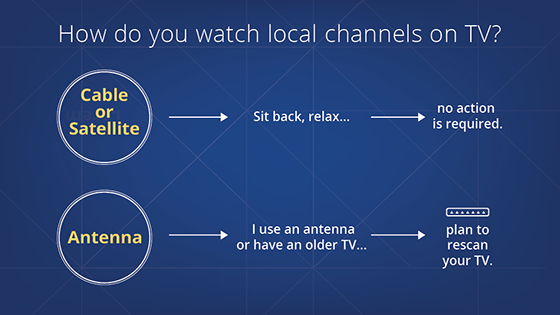The Main Principles Of Apollo Group Tv
The Main Principles Of Apollo Group Tv
Blog Article
The 30-Second Trick For Apollo Group Tv
Table of ContentsApollo Group Tv for BeginnersTop Guidelines Of Apollo Group TvThe Only Guide to Apollo Group TvApollo Group Tv - The Facts
In this situation, as opposed to having three-minute commercial spots during a 30-minute tv program, television shows might alter to one where a customer will certainly be required to have a regular monthly registration, so that they cen sight targeted banner advertisements. This sort of marketing already occurs on the net, and the quantity of information tv business accumulate permits them to do similar.Define the major trends among the broadcasting and cable television networks. Popular radio shows such as authorities dramatization Dragnet and western cowboy collection Gunsmoke were adjusted for tv, and new Television shows were sponsored by single marketers, simply as radio shows had actually been.
Today, the television industry is much more complex. Programs are sponsored by numerous marketers; programming is regulated by major media conglomerates; and the 3 significant networks no longer control the airwaves but rather share their viewers with countless cable channels. A number of factors represent these trends within the industry, including technological growths, federal government guidelines, and the production of brand-new networks.

Some Known Facts About Apollo Group Tv.
Also public tv has become based on the impact of advertising and marketing. Established in 1969, (PBS) established out of a record by the Carnegie Compensation on Educational Tv, which took a look at the role of instructional, noncommercial television on culture. The report advised that the government money public television in order to provide variety of shows during the network eraa solution produced "not to market products" but to "enhance citizenship and public solution (McCauley, 2003)." Public television was likewise intended to offer global access to tv for audiences in backwoods or customers that could not manage to pay for personal tv services.
The duration between 1950 and 1970 is historically identified as the. Besides a little part of airtime regulated by public tv, the three major networks (called the Big Three) dominated the television sector, jointly accounting for more than 95 percent of prime-time watching. In 1986, Rupert Murdoch, the head of international company News Corp, introduced the Fox network, testing the prominence of the Big 3.
Targeting young and minority audiences with programs such as Buffy the Vampire Killer, Moesha, Dawson's Creek, and The Wayans Bros., the brand-new networks wished to attract terminals far from their old network associations. However, as opposed to repeating the success of Fox, UPN and WB had a hard time to make an effect. Not able to draw in numerous affiliate stations, the two fledgling networks reached less houses than their bigger opponents due to the fact that they were inaccessible in some smaller sized cities.
This choice led the method for the advancement of cable television film channels, contributing to the rapid development of cord in the 1980s and 1990s. apollo tv. More deregulation of wire in the 1984 Cord Communications Policy Act removed restrictions on cable prices, making it possible for drivers to charge what they wanted for cable solutions as long as there worked competition to the service (a criterion that over 90 percent of all cord markets could meet)
The 15-Second Trick For Apollo Group Tv

Having created the very first "superstation," Turner broadened his world by starting 24-hour information network CNN in 1980. At the end of the year, 28 national programming services were offered, and the cord change had actually started. Over the next decade, the market went through a duration of quick development and appeal, and by 1994 visitors can select from 94 basic and 20 premium cable television solutions.
Figure 9 - https://apollogtv01.bandcamp.com/album/apollo-group-tv.16 Boosted competition from cord channels has triggered a steady decline in the networks' target market rankings. During the 1950s, the expense of generating a single television show raised as shows ended up being much longer and manufacturing expenses skyrocketed. Sponsorship on network tv shifted from single sponsorship, in which a program was totally sustained and produced by one advertiser, to several sponsorship, in which marketers acquired 1- or 2-minute spots on the program
Each reaction must be a minimum of one paragraph. Select one of the Big 4 networks and publish out its weekly programs timetable. Watch the network's prime-time programs over the program of a week, keeping in mind the target market for each and every program. Observe the advertising sponsors that support each show and compare exactly how the products and services fit with the designated audience.
The Only Guide to Apollo Group Tv

Straight TV, commonly described as typical broadcast TV, encompasses cord and satellite tv. It's called "straight" due to the fact that content follows an established programs routine, unlike on-demand material which the specific visitor determines to watch based on their own preferences and schedule. When you ask, "What is linear TV?", think about it as the classic way of viewing TV that has been around for decades.
Report this page